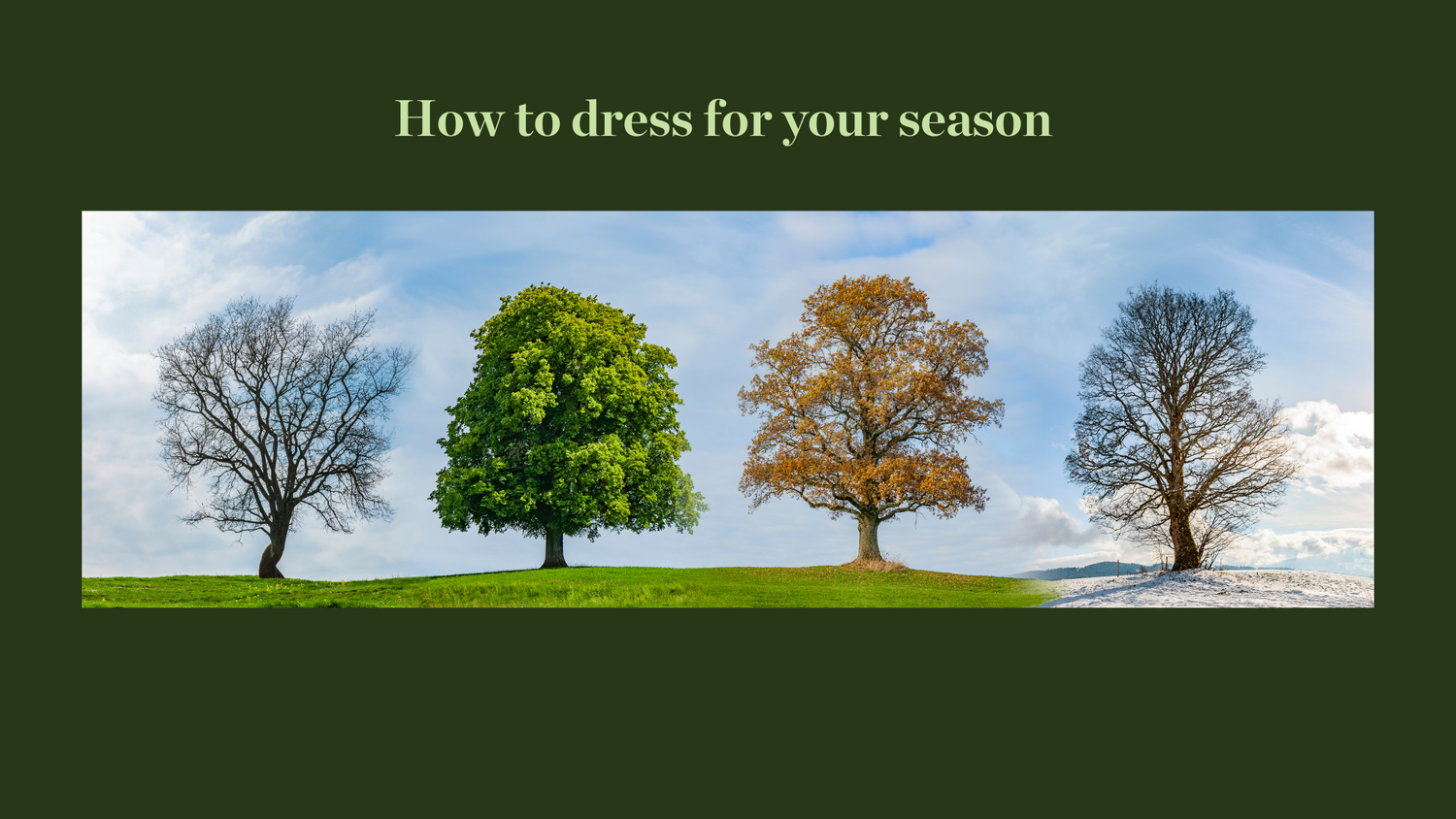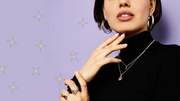Toolally Guide: How to Dress for your Season

Seasonal colouring: How to choose jewellery as a Winter, Autumn, Spring or Summer
That conversation. You can’t avoid it on social media, there are entire websites devoted to it, even your gran talks about popping into town to get them tested…
Your colours.
Seasonal colouring has been a thing since the dawn of fashion, and there’s a reason for that - it can be a complete game changer when it comes to levelling up your style game. One of the most empowering things we can do for our style is learning to embrace the colours that naturally complement our appearance.
Personal seasonal colouring is a method of identifying your natural colouring, then categorising it into one of four seasonal types: winter, spring, summer or autumn. Each season corresponds to a palette of colours that complement your natural features. Wearing colours from your season’s palette will ensure you have a harmonious look that appears put together and considered. But how do you know whether you have summer, winter, spring or autumn colouring? Let’s break it down and find out which colours are truly made for you!
We’ll even include our top seasonal earring recommendations so you know what to be on the lookout for.
Winter colouring
You most likely fall into the winter colouring bracket if you have cool undertones and look best in stark, highly contrasting colours. A winter landscape includes deep blues, bold whites and icy shades - that’s the vibe of this season.
-
Dark hair, like deep brown or black, is common amongst winters. Lighter shades include silver and platinum blonde.
-
Eyes: Winter eyes are often cool-toned and intense, like icy blue, dark brown, or green.
-
Skin tone: Whether you have pale or dark skin, look for your undertones. Winters always have a cool blue undertone to their skin.
Best colours: Winter’s palette loves cool, vibrant and jewel-toned colours. Reach for icy blues, crisp whites, emerald greens, royal purples and deep blacks. These striking colours will make you stand out in the best way. Silver will really pop against your cool tones.
Avoid: Warm colours like oranges, yellows, or earth tones that can make your complexion look washed out. Also avoid shades that are too muted, like beiges and browns.
Spring colouring
If you’ve got warm undertones and suit pastels and ‘fresh’ colours, you could have spring colouring. This season is full of life and radiance. Think about the first blooms of spring on a sunny morning - how lovely.
-
Hair: Spring hair is usually light and golden, often in shades of blonde, light brown, or auburn. Natural highlights and ombres are common to reflect a range of soft colours.
-
Eyes: Clear, light eyes like light blue, turquoise, or bright green are often found in springs.
-
Skin tone: Springs often have fair to medium skin with warm, peachy, or golden undertones.
Best colours for springs: bright colours are your go-to. Think clear blues, corals, rosy pinks, grass greens and bright yellows. These fresh colours will bring out your radiant complexion and the warmth in your skin, so will gold jewellery.
Avoid: Dark, muted, or overly dramatic shades like black or dark brown. They’ll probably overpower your natural softness.
Summer colouring
If you’ve got cool undertones, but you’re more on the softer side than the dramatic winter, then you’re likely a summer. Summers tend to be more subtle, cool and muted. Think rolling lavender fields under a soft morning mist… don’t get too relaxed - stay awake and keep reading.
-
Hair: Summers often have lighter hair - ash blondes, browns, or soft shades of grey.
-
Eyes: are usually soft and cool. Pale blue, grey, or green with a cool undertone.
-
Skin tone: Typically there’s a cool undertone, and, ironically, you may be prone to burning easily in the sun.
Best colours for summers: soft, pastel, and dusty shades work wonders for summers. Think of your colouring like a summer’s bouquet: rose, lavender, light blue, powdery pink and sage green. Colours like these will enhance your natural features rather than overwhelming them.
Avoid: Bold, intense colours like bright reds or oranges. Stay away from anything too warm - they’ll clash with your cool undertones.
Autumn colouring
If you’ve got warm undertones and love to wear rich, golden colours, then you’re probably an autumn! This season is full of deep, earthy tones. Think cosy jumpers and sunny afternoon trips to your fave coffee shop.
-
Hair: Autumn hair tends to have a rich, deep quality to it - golden blonde, auburn, deep red and warm brunettes.
-
Eyes: Warm brown, hazel, and green eyes are common in this palette, often with gold flecks.
-
Skin tone: Autumn skin tones often have warm undertones. You might tan easily and have a golden glow to your skin.
Best colours for autumns: Deep, earthy colours are your best mates. Rich burgundies, mustard yellows, forest greens, rusty oranges and terracotta. Colours like these will make your skin glow.
Avoid: Cool tones like icy blues, bright whites and any pastel colours. Shades like these will wash out your natural warmth.
All things considered…
We’ve said it once, we’ve said it a thousand times. “The jewellery you wear should be a considered choice you make every day”. Well, understanding your personal seasonal colours is an easy way to help you come to that daily morning decision when it comes to your jewellery and your wardrobe.
Whether you’re a winter, spring, summer, or autumn, embracing the colours that suit your natural features is a surefire way to boost your confidence and highlight your unique beauty. With the right colours, you’ll always look effortlessly stylish!
Previous article

Cart
Your cart is empty










